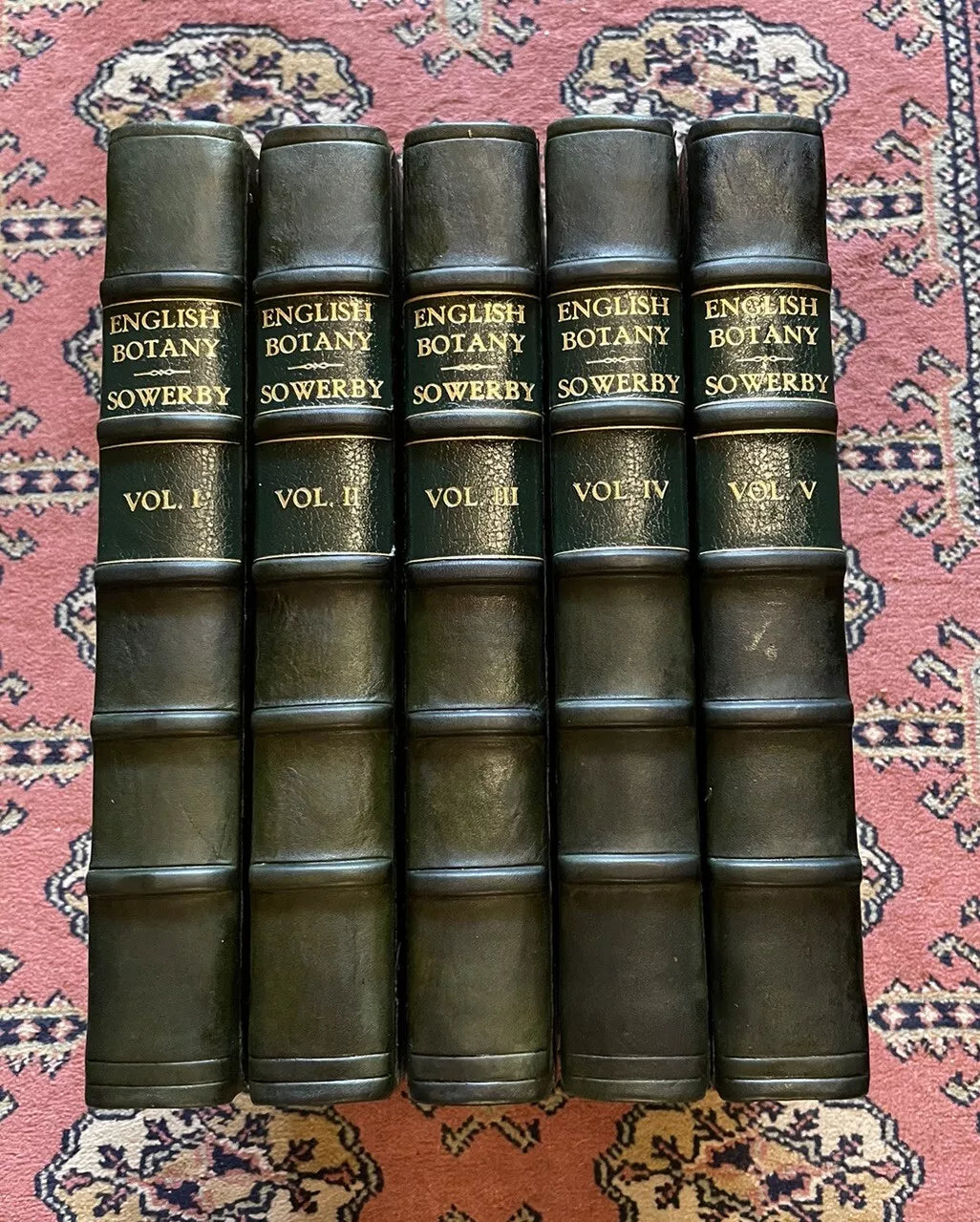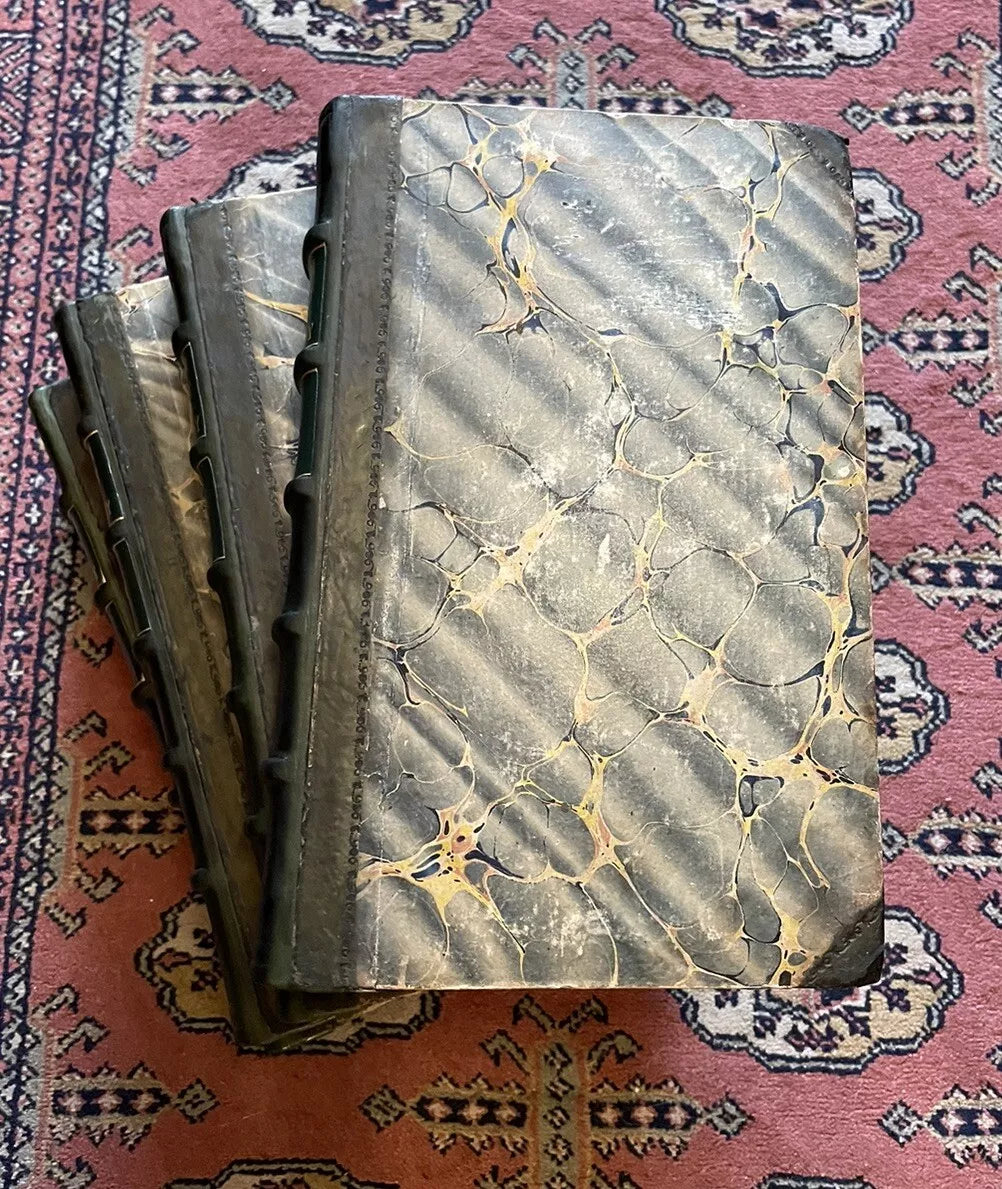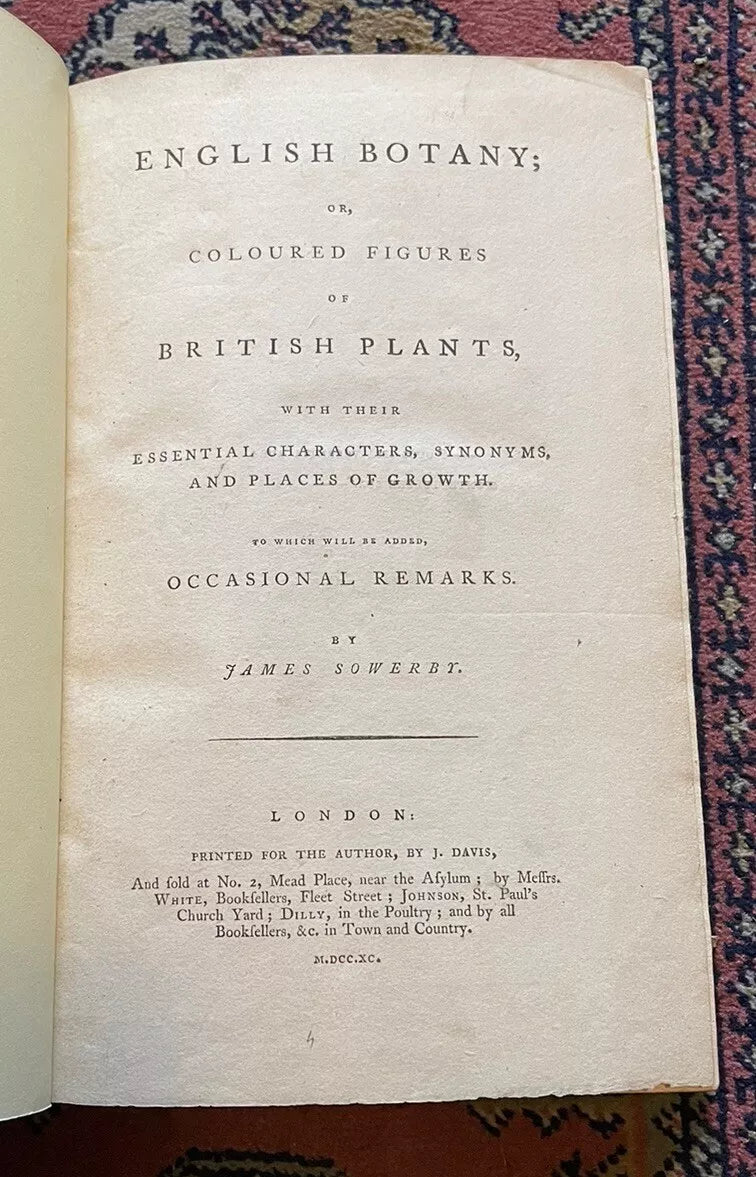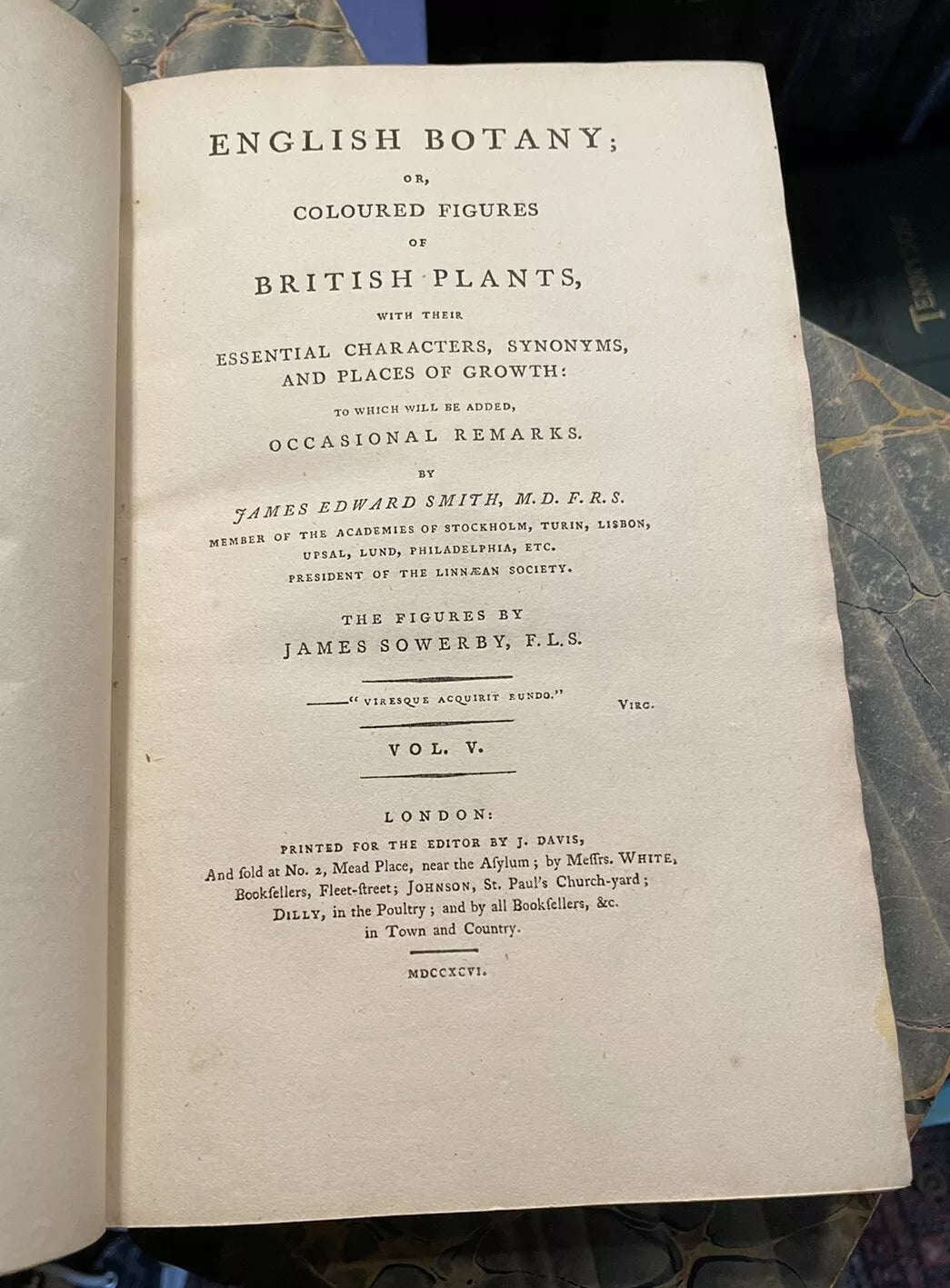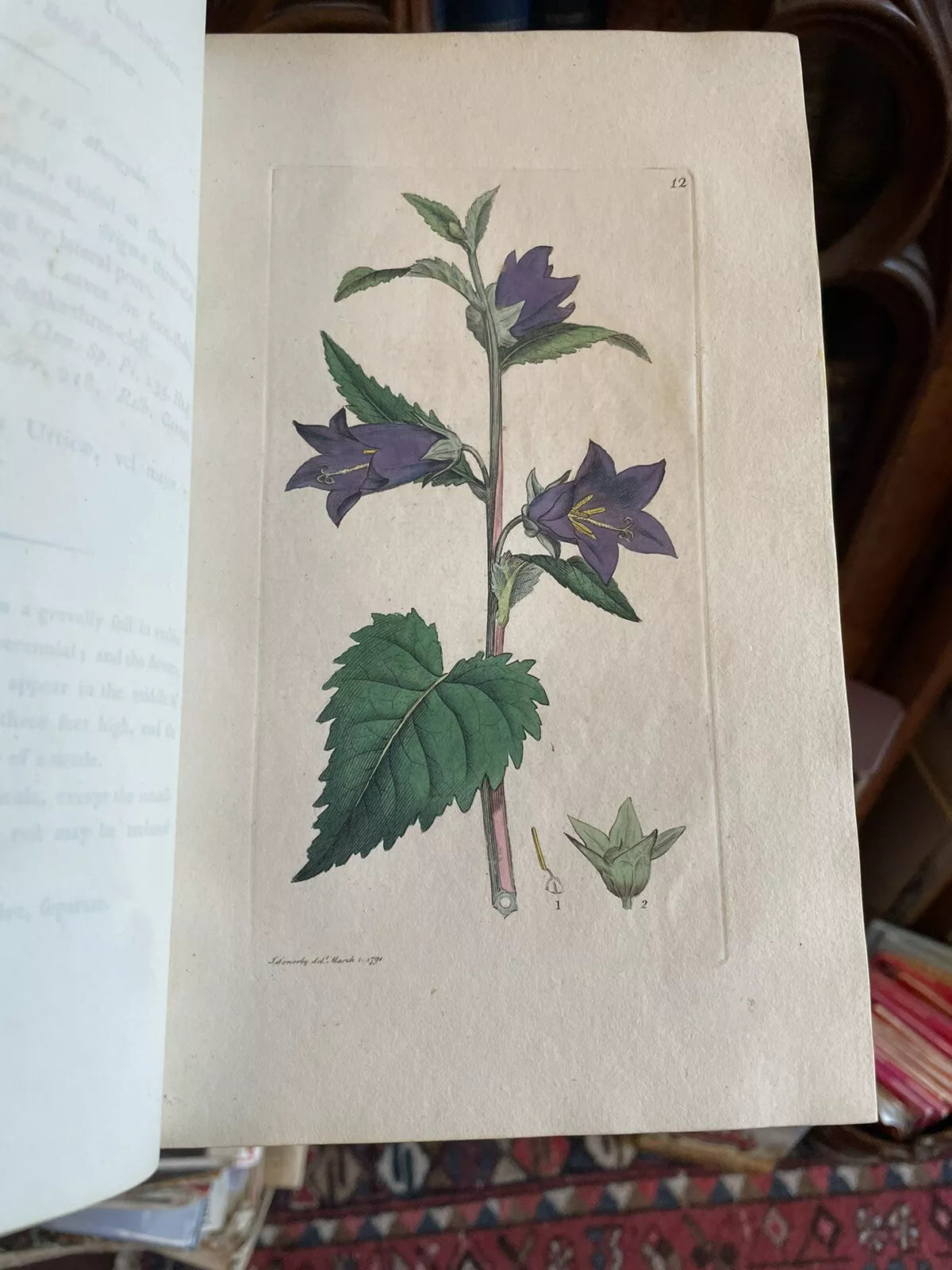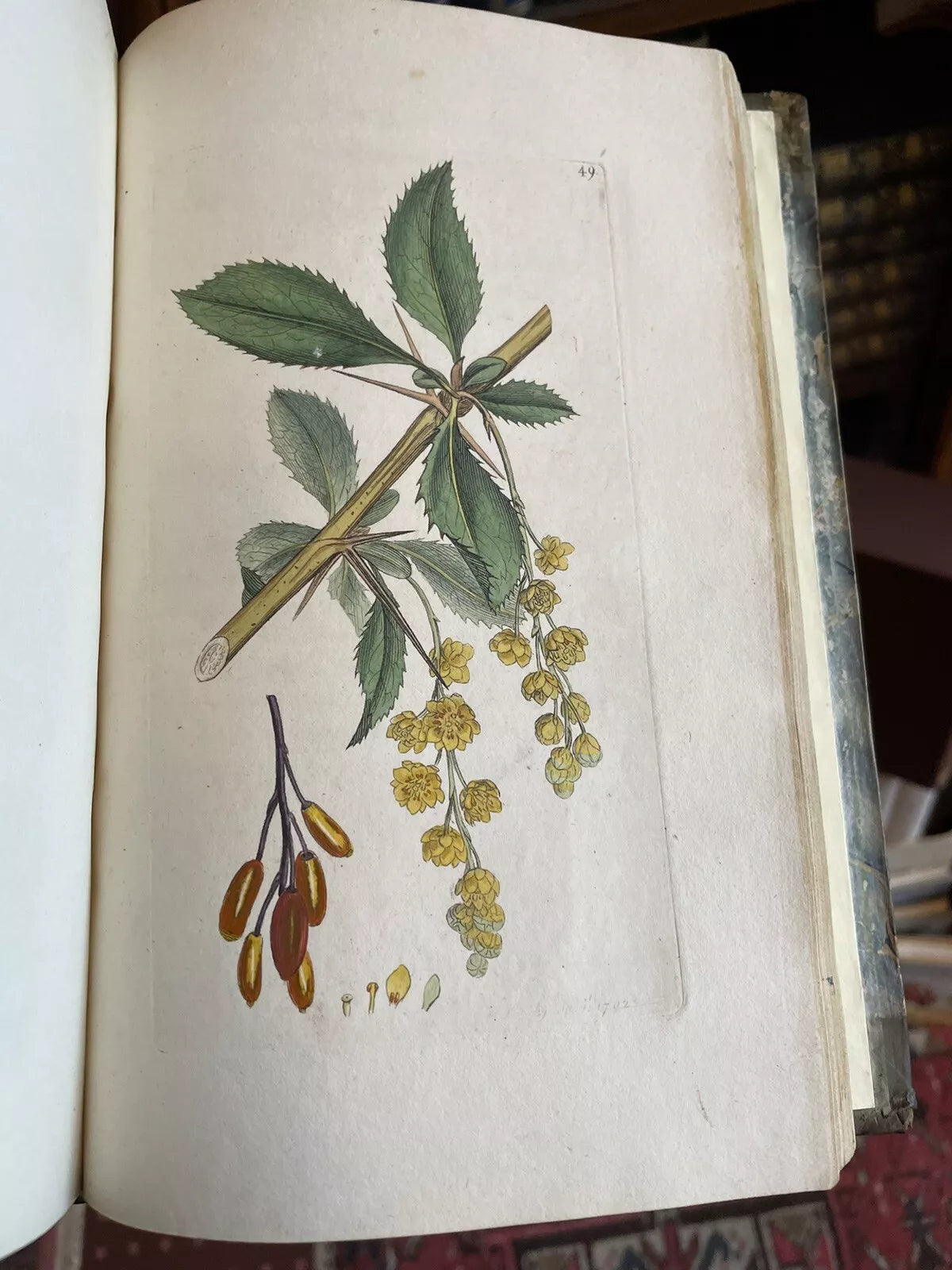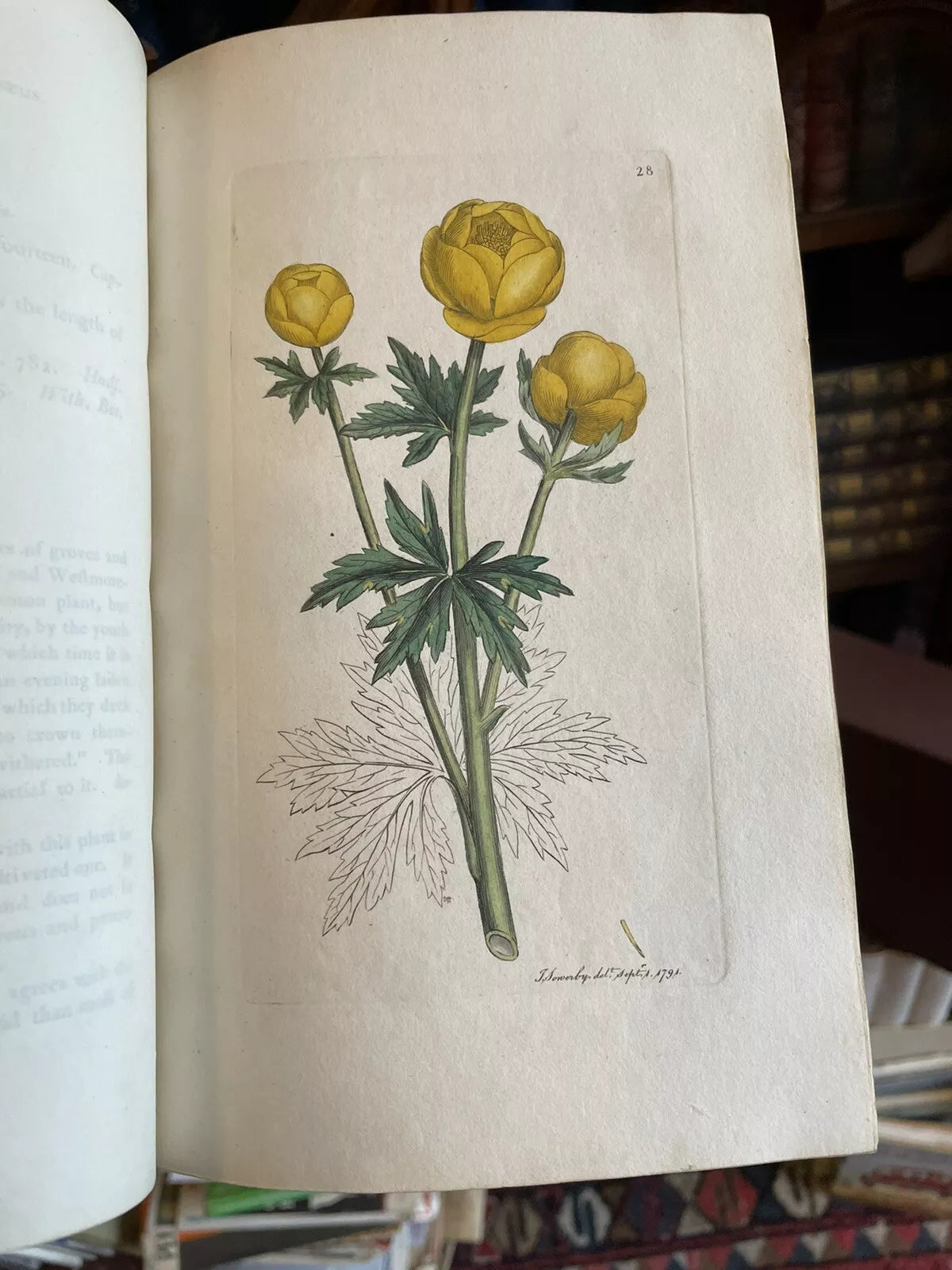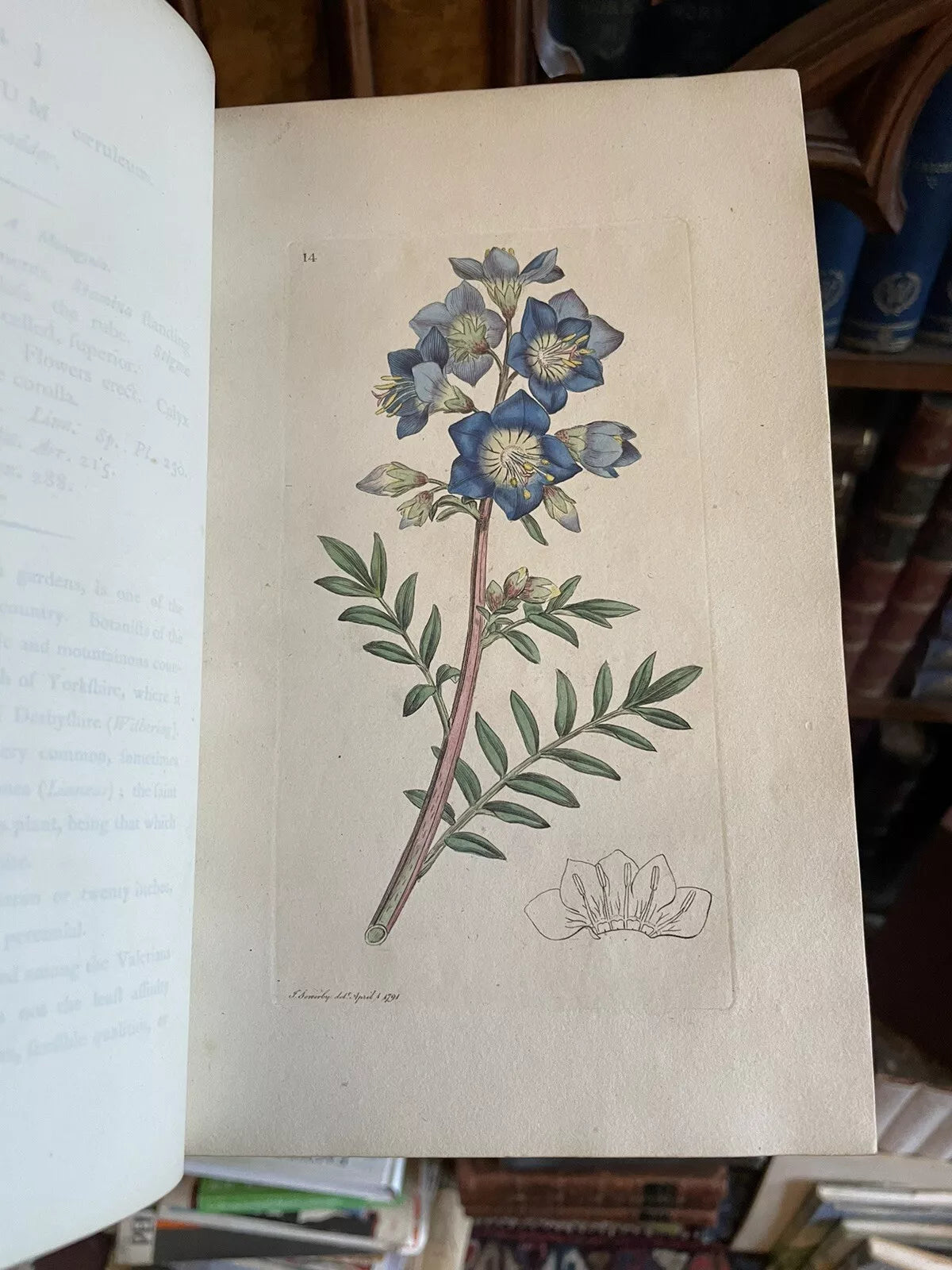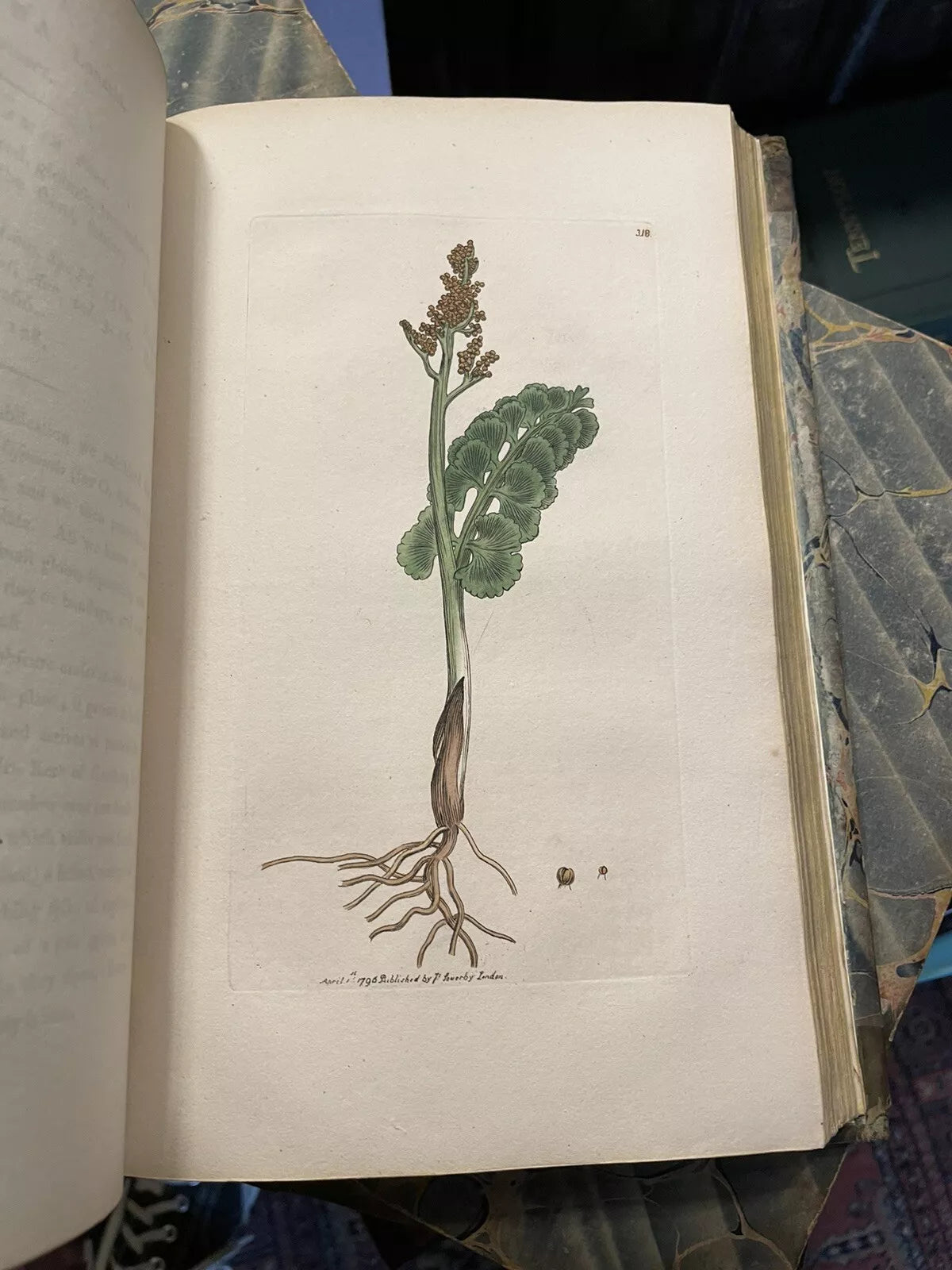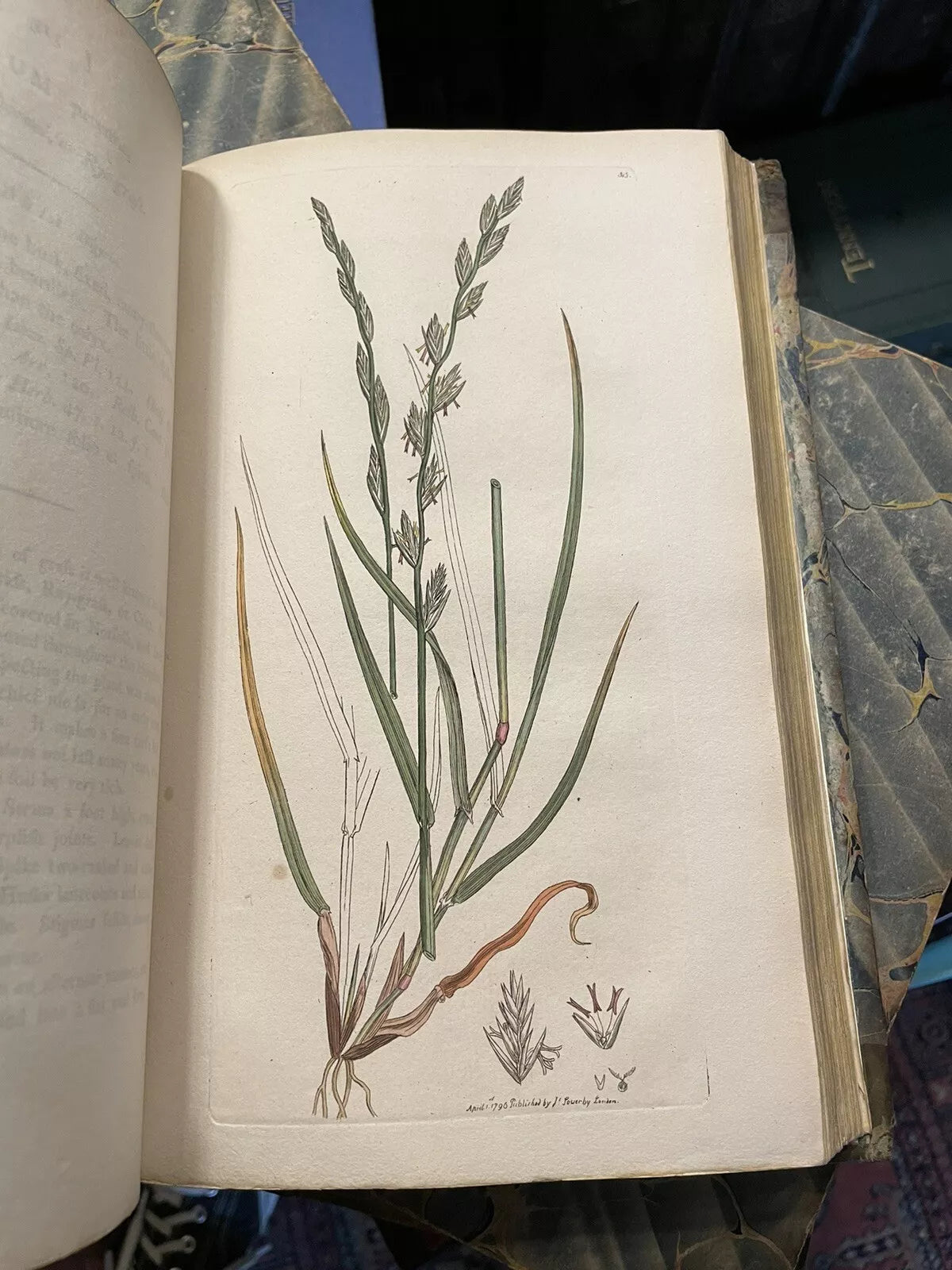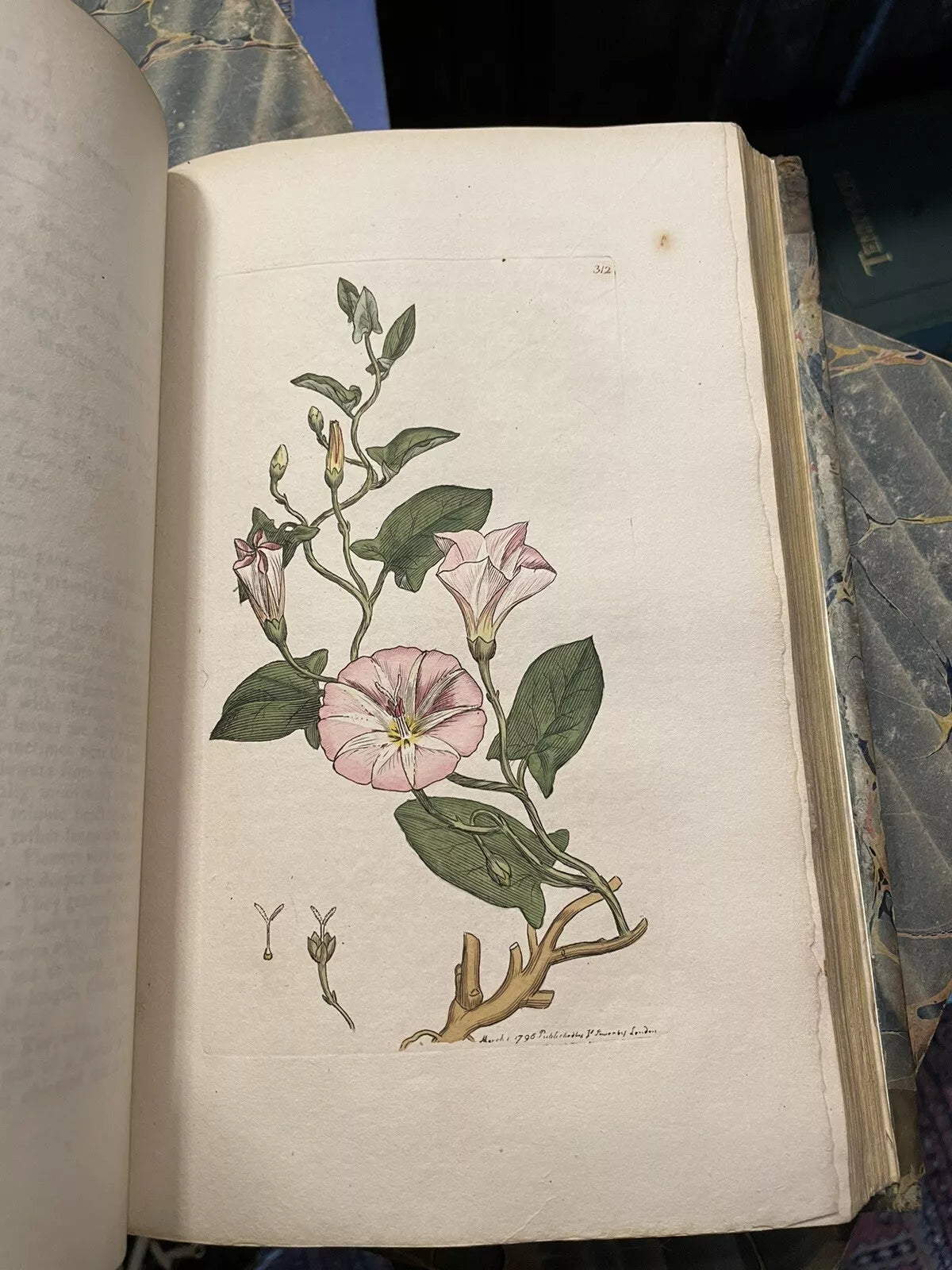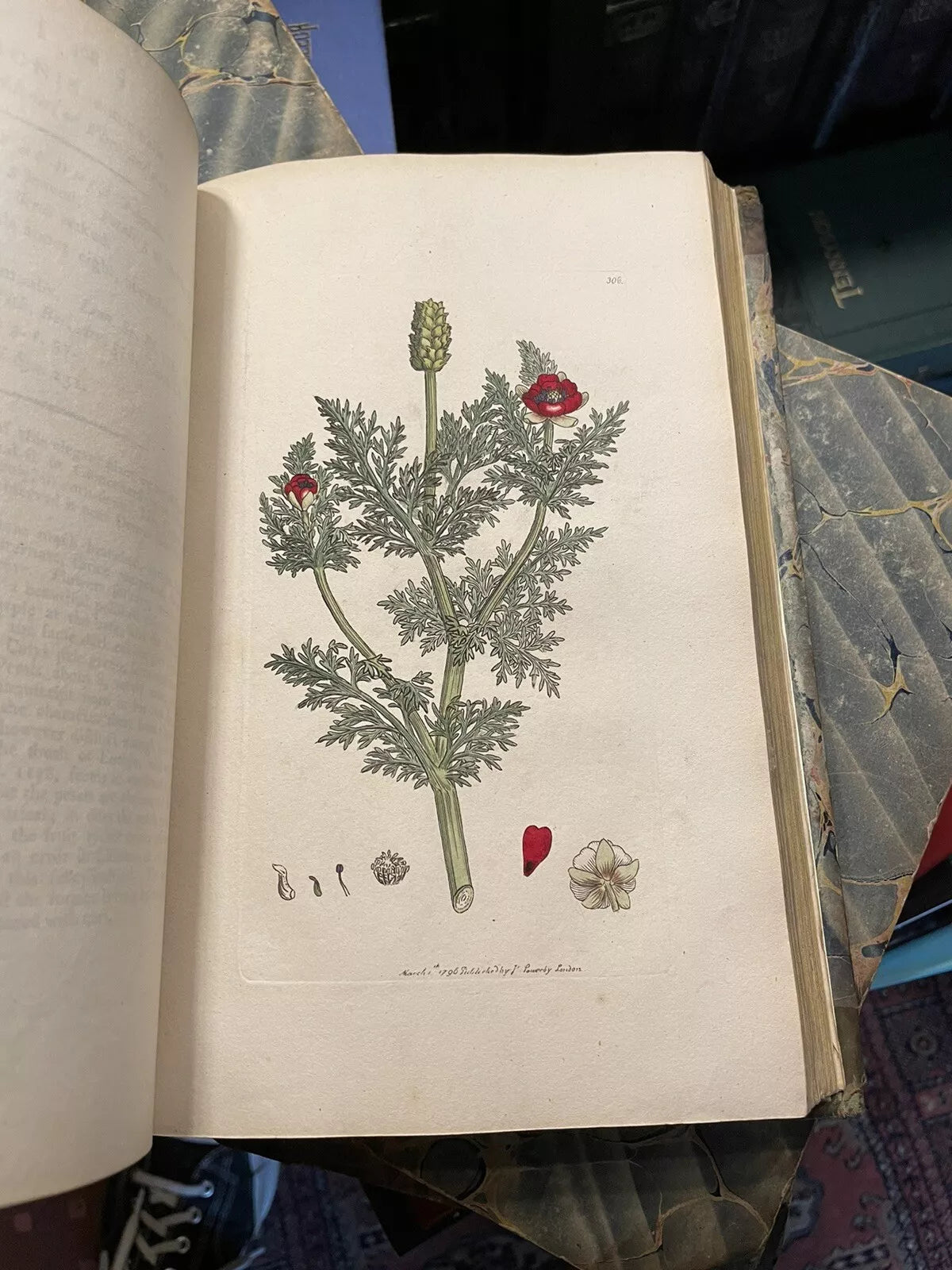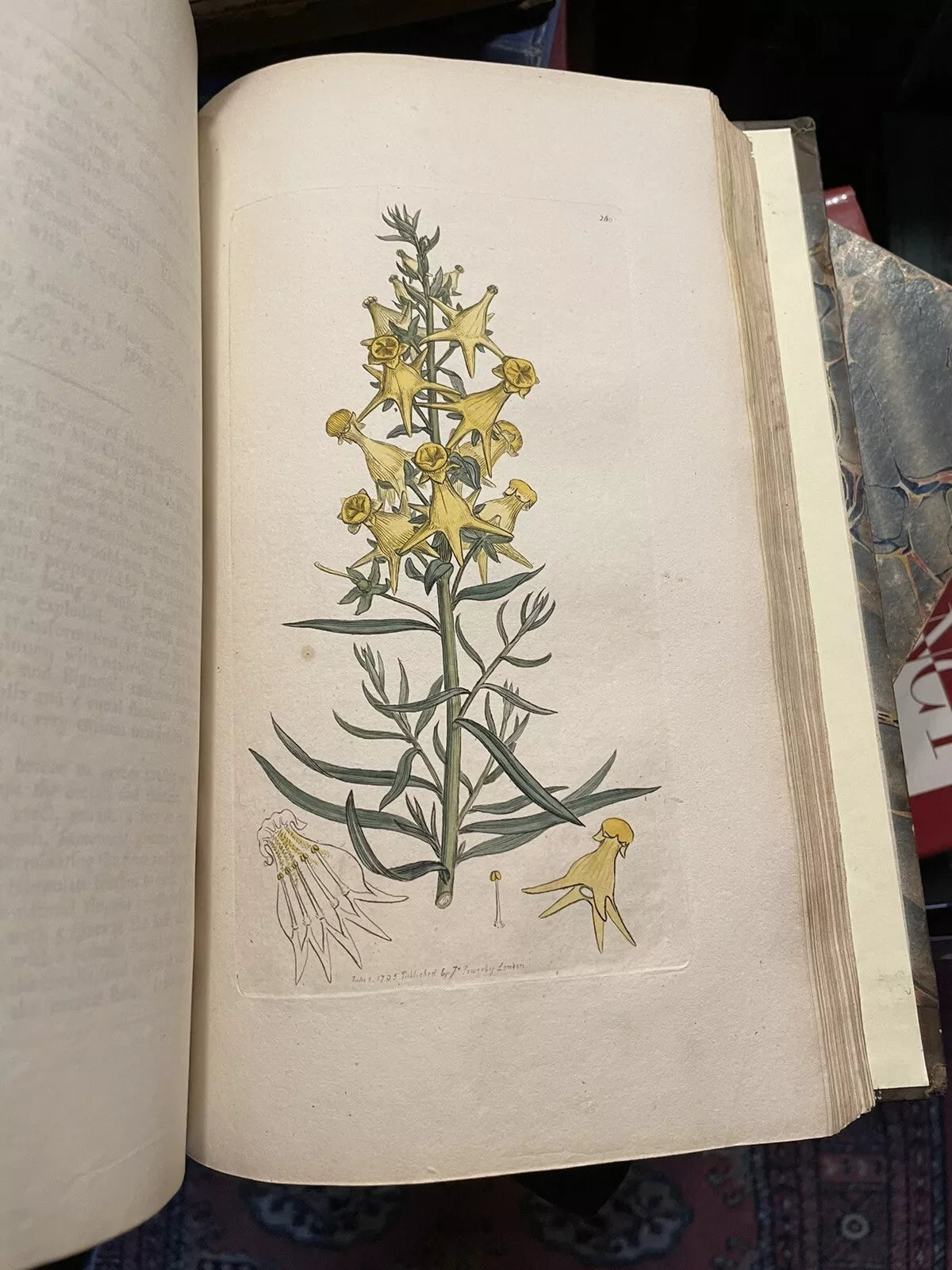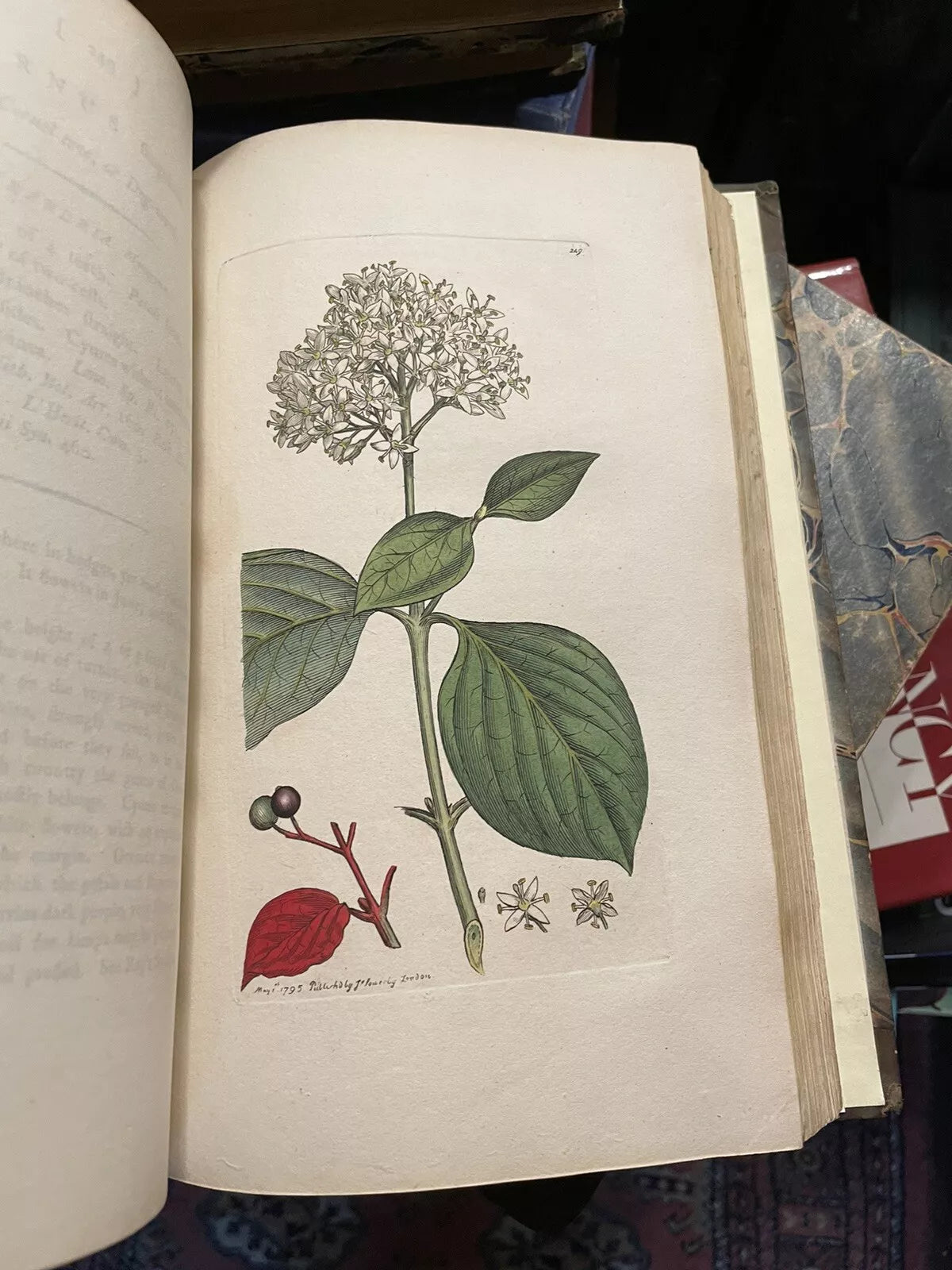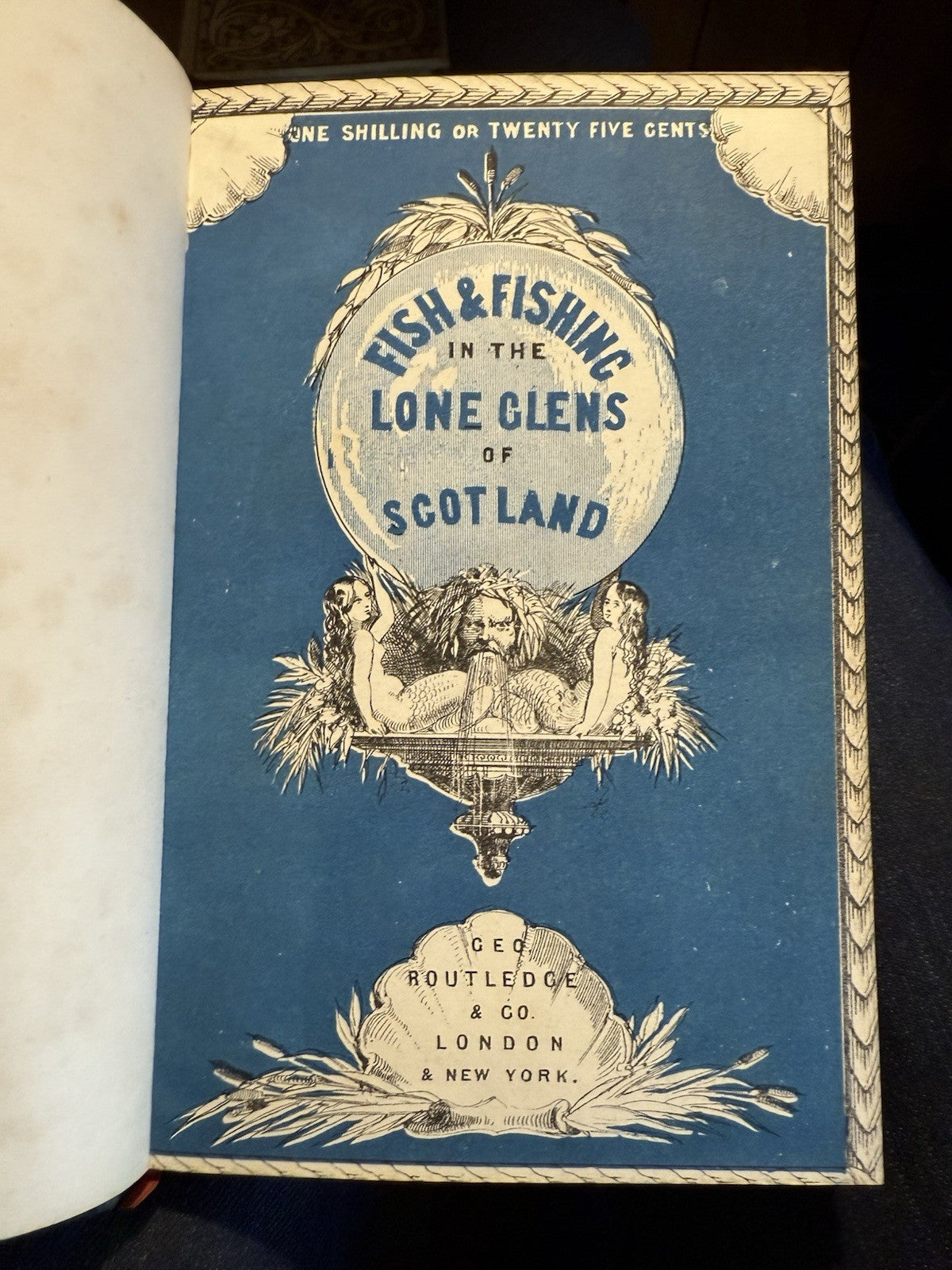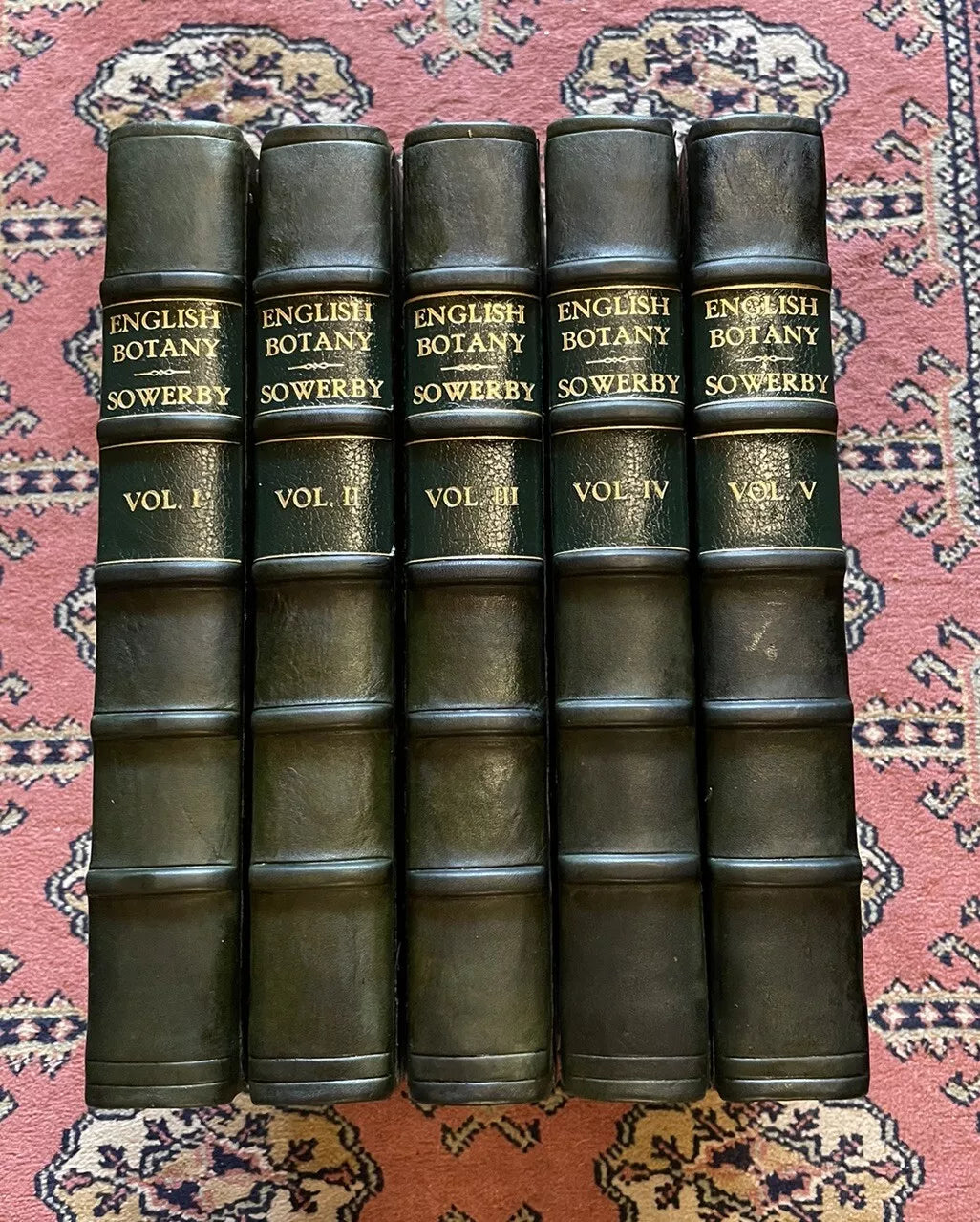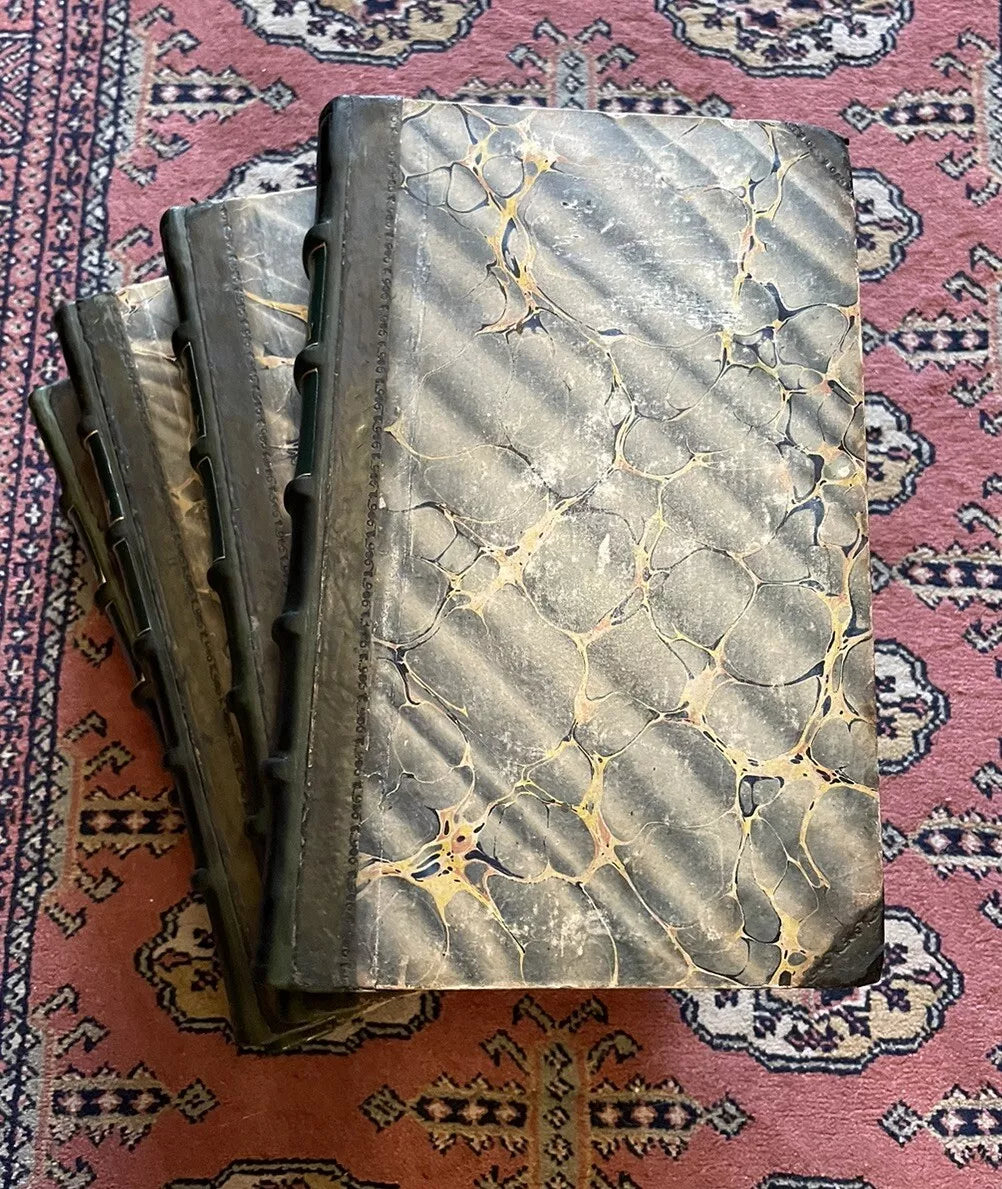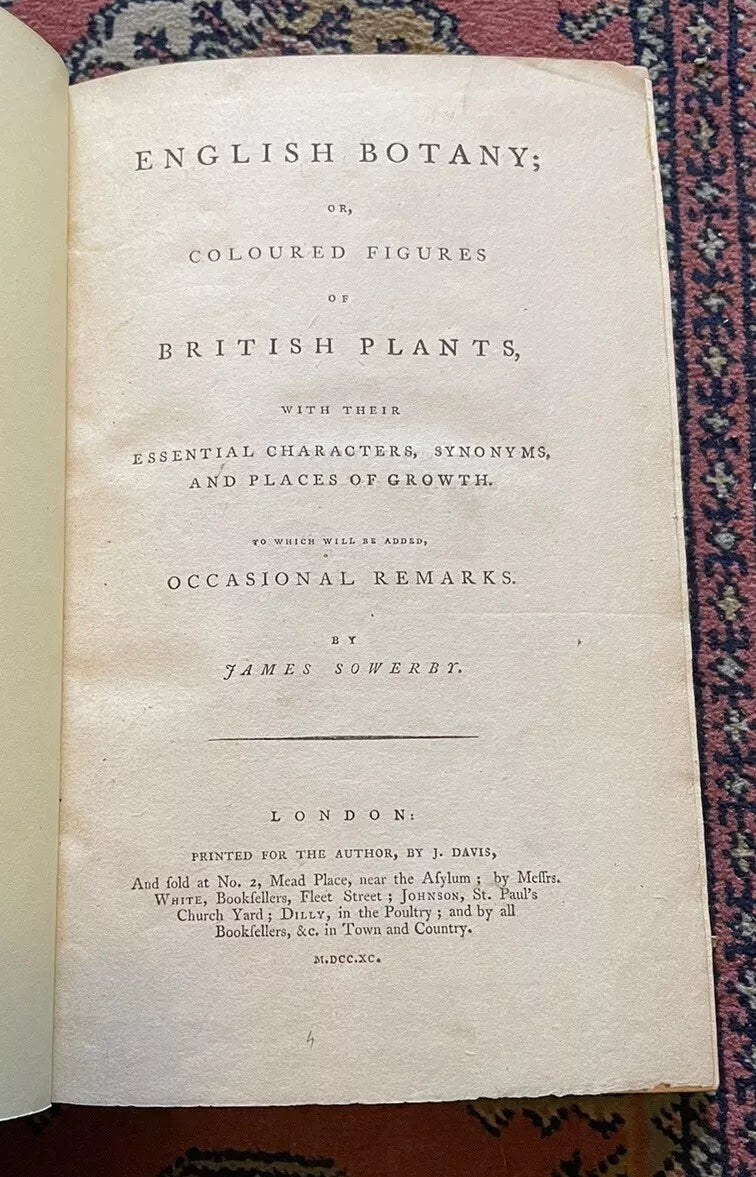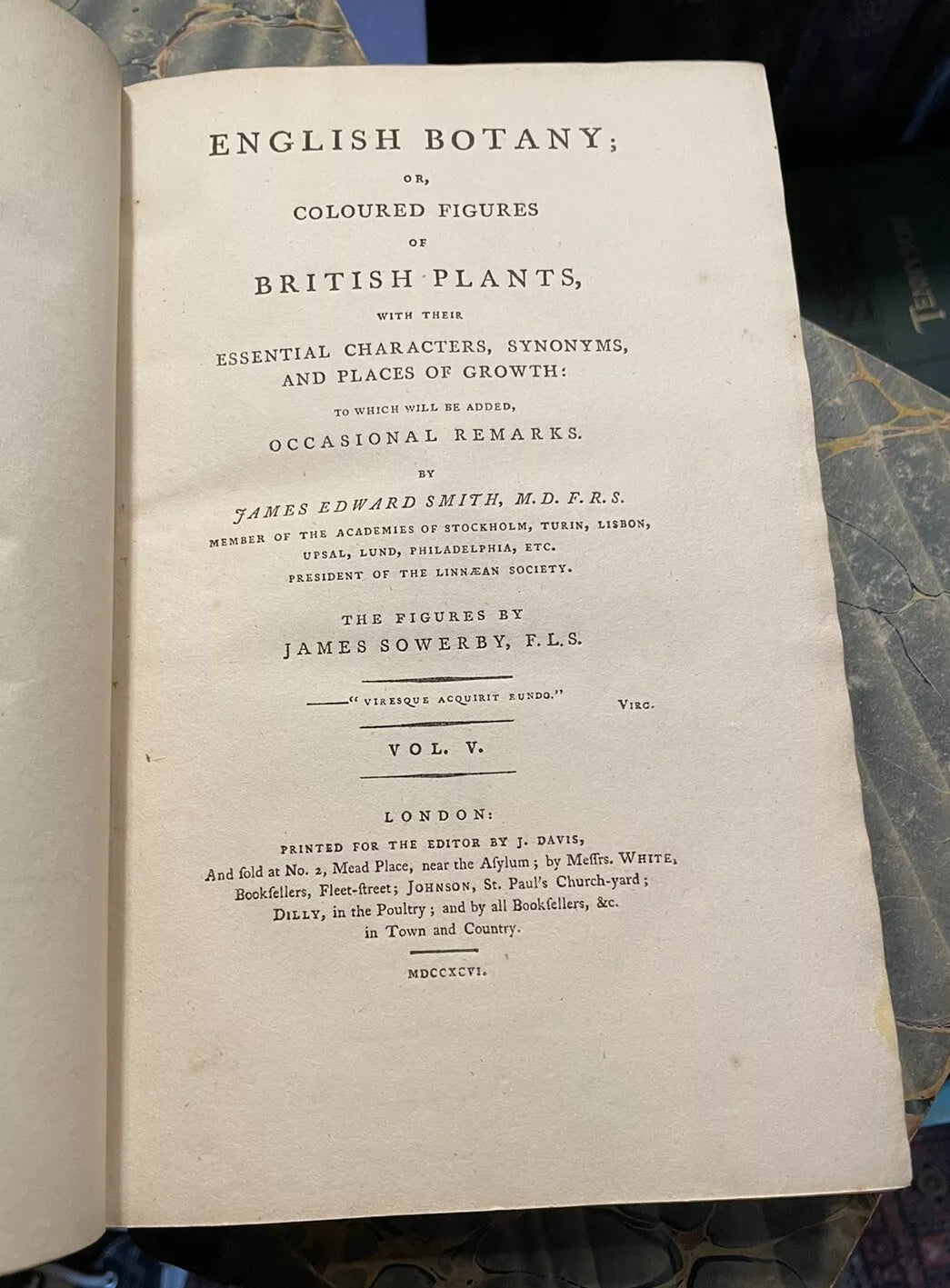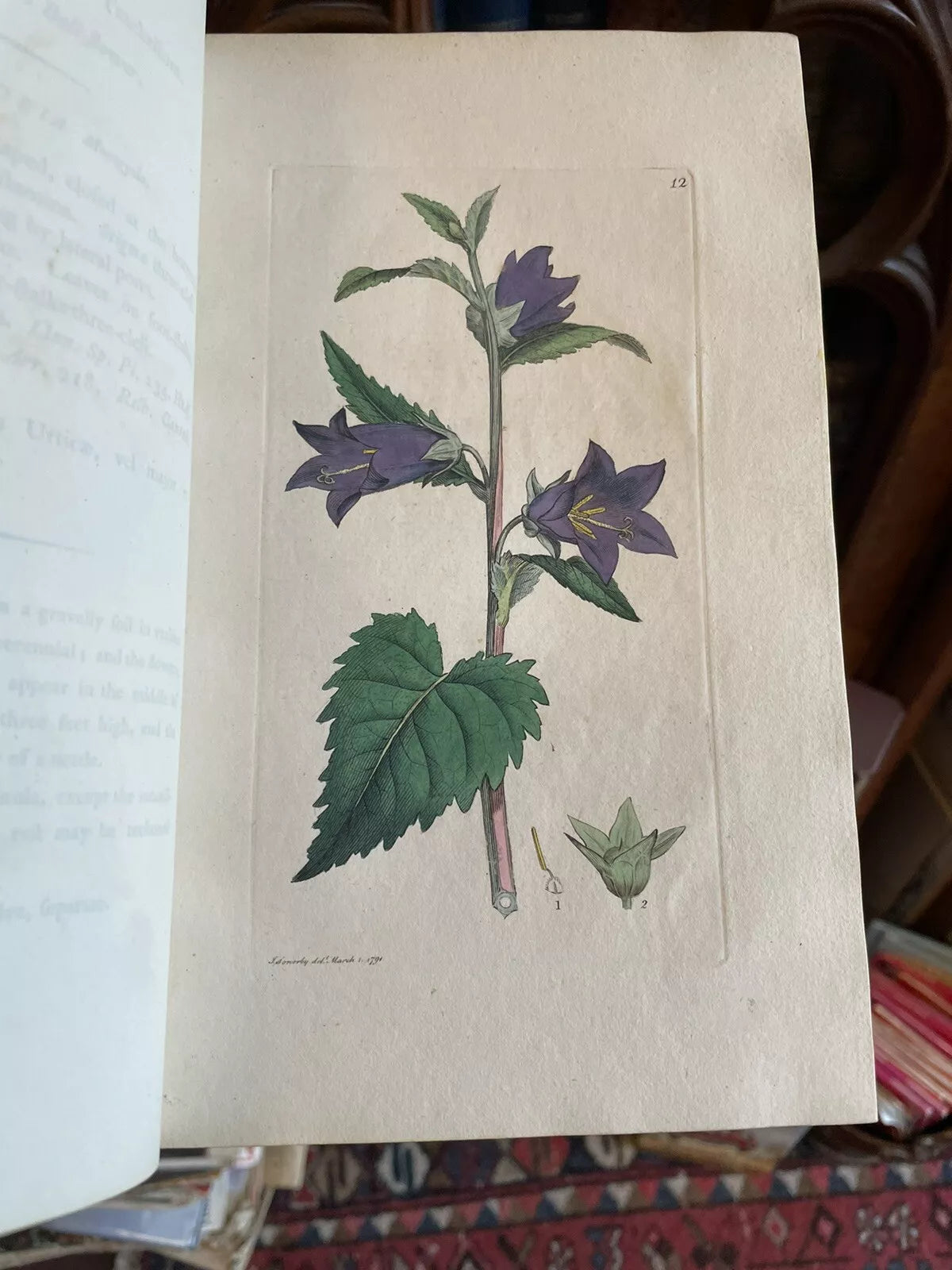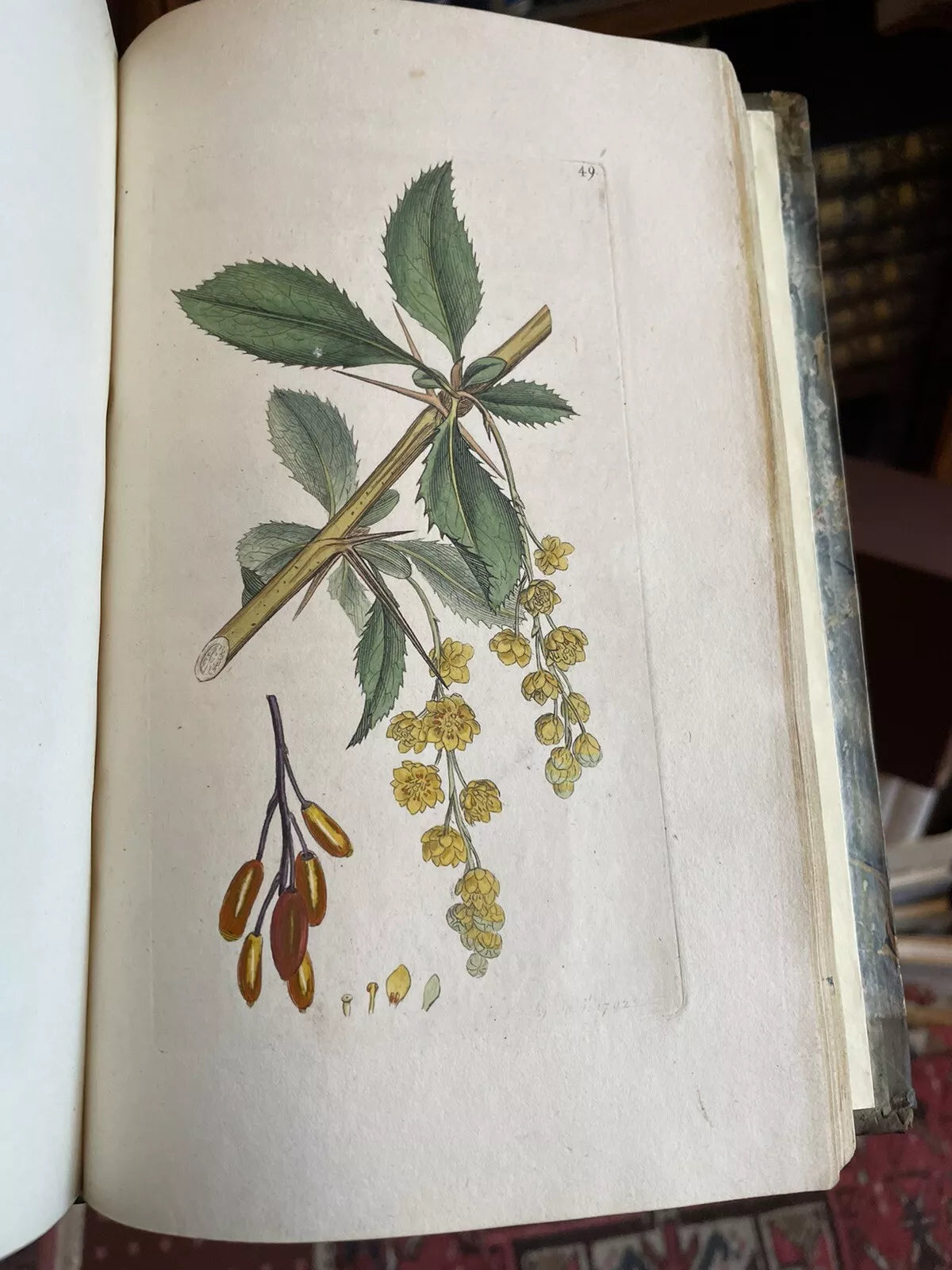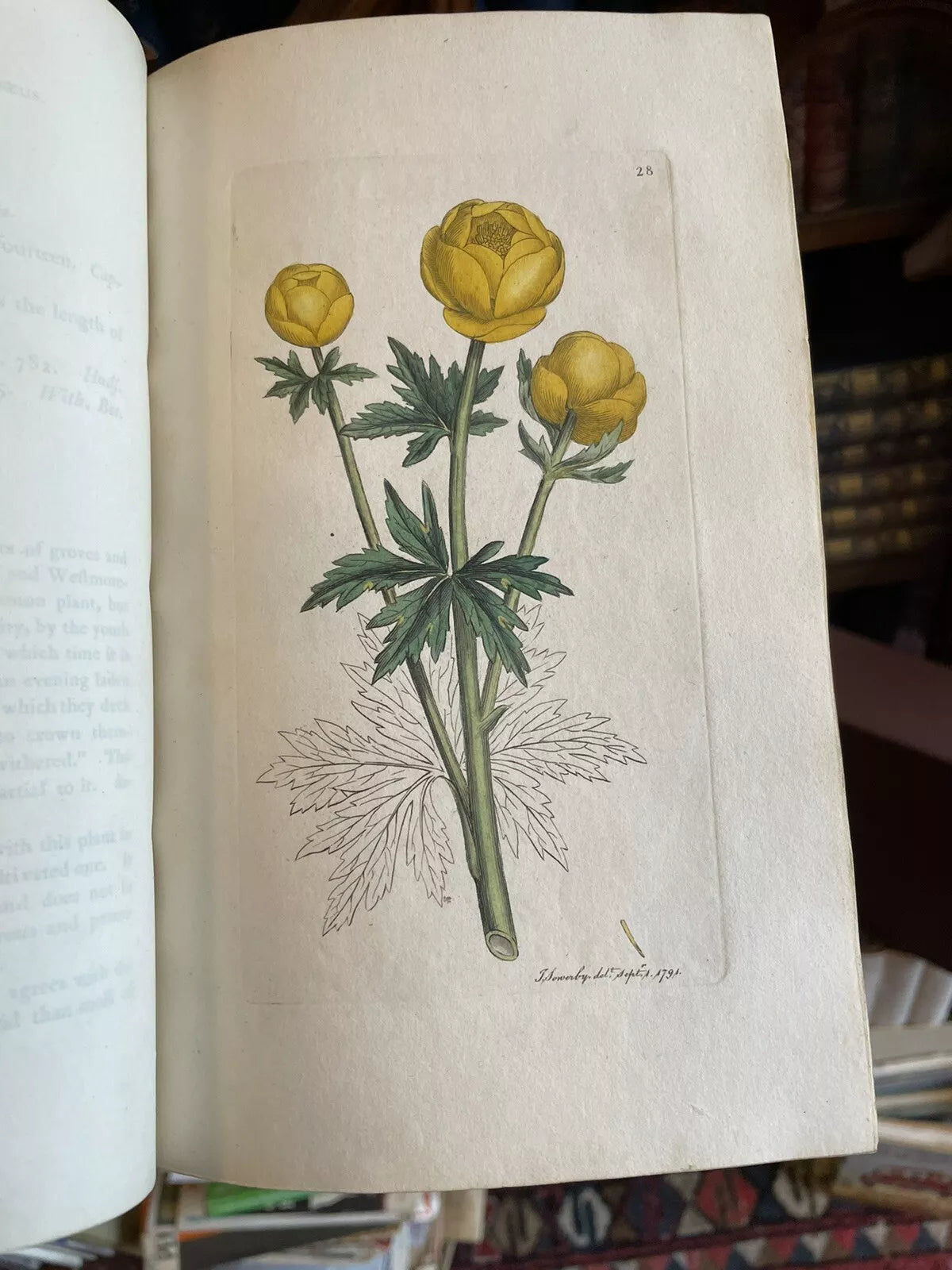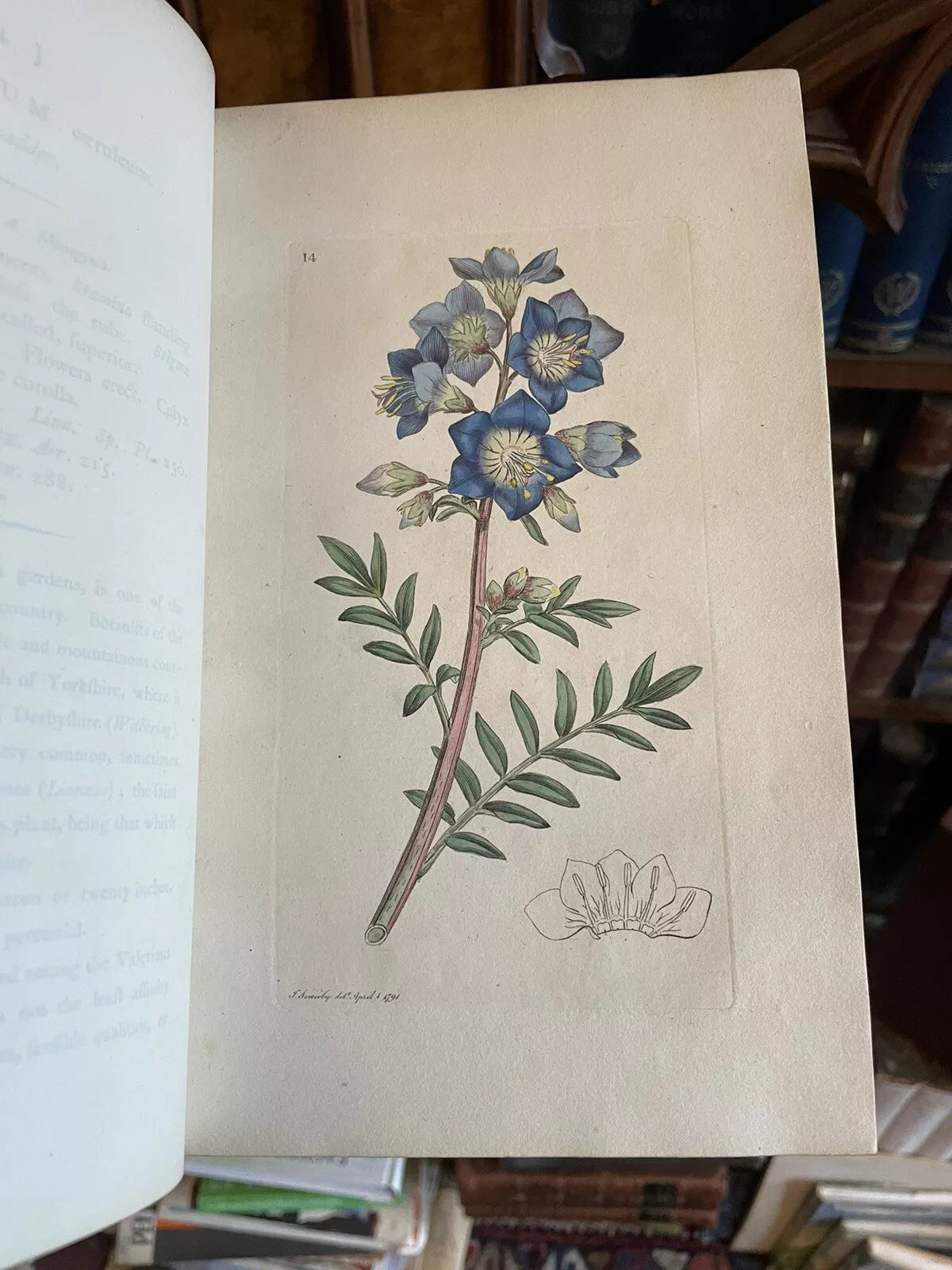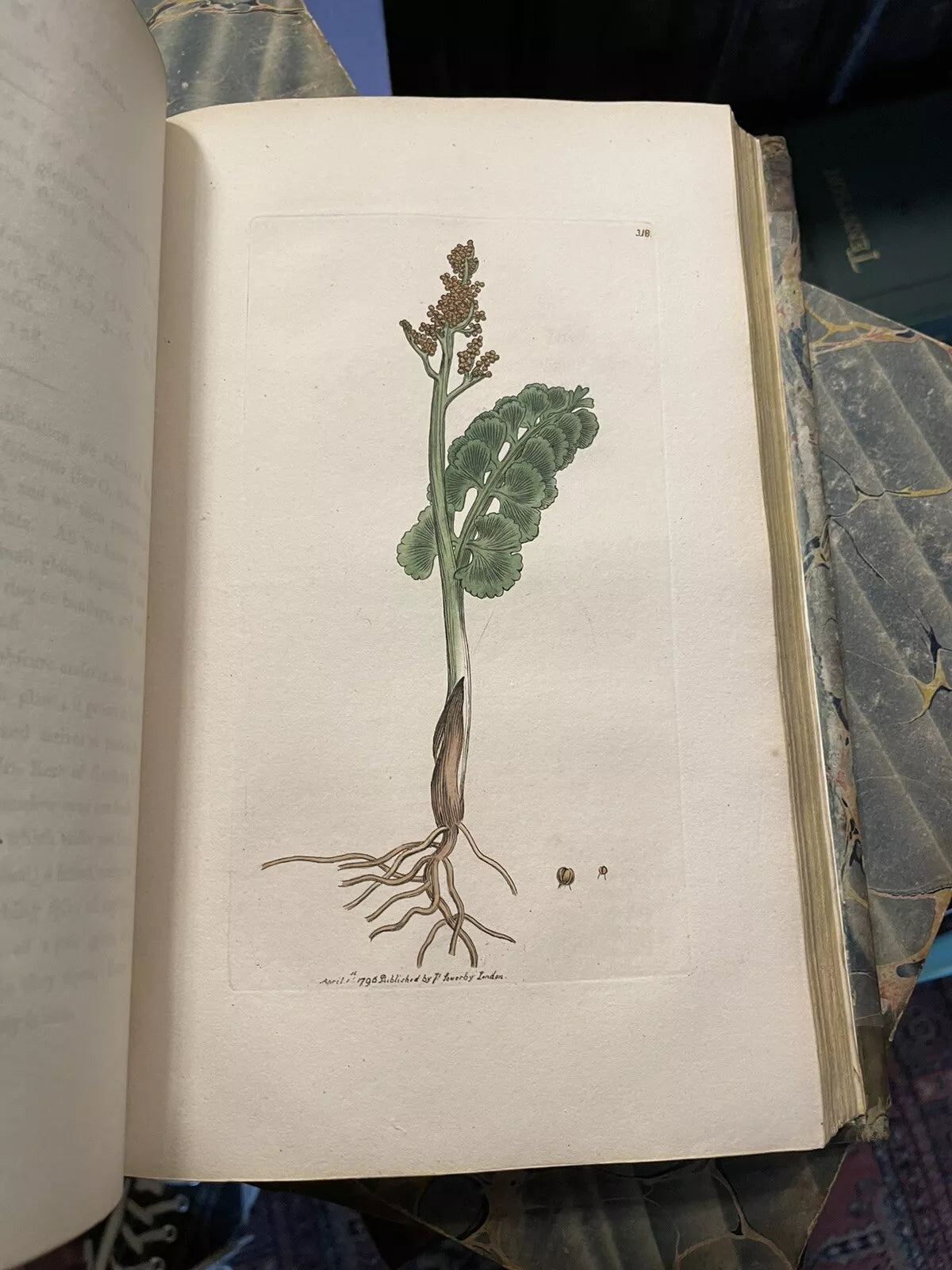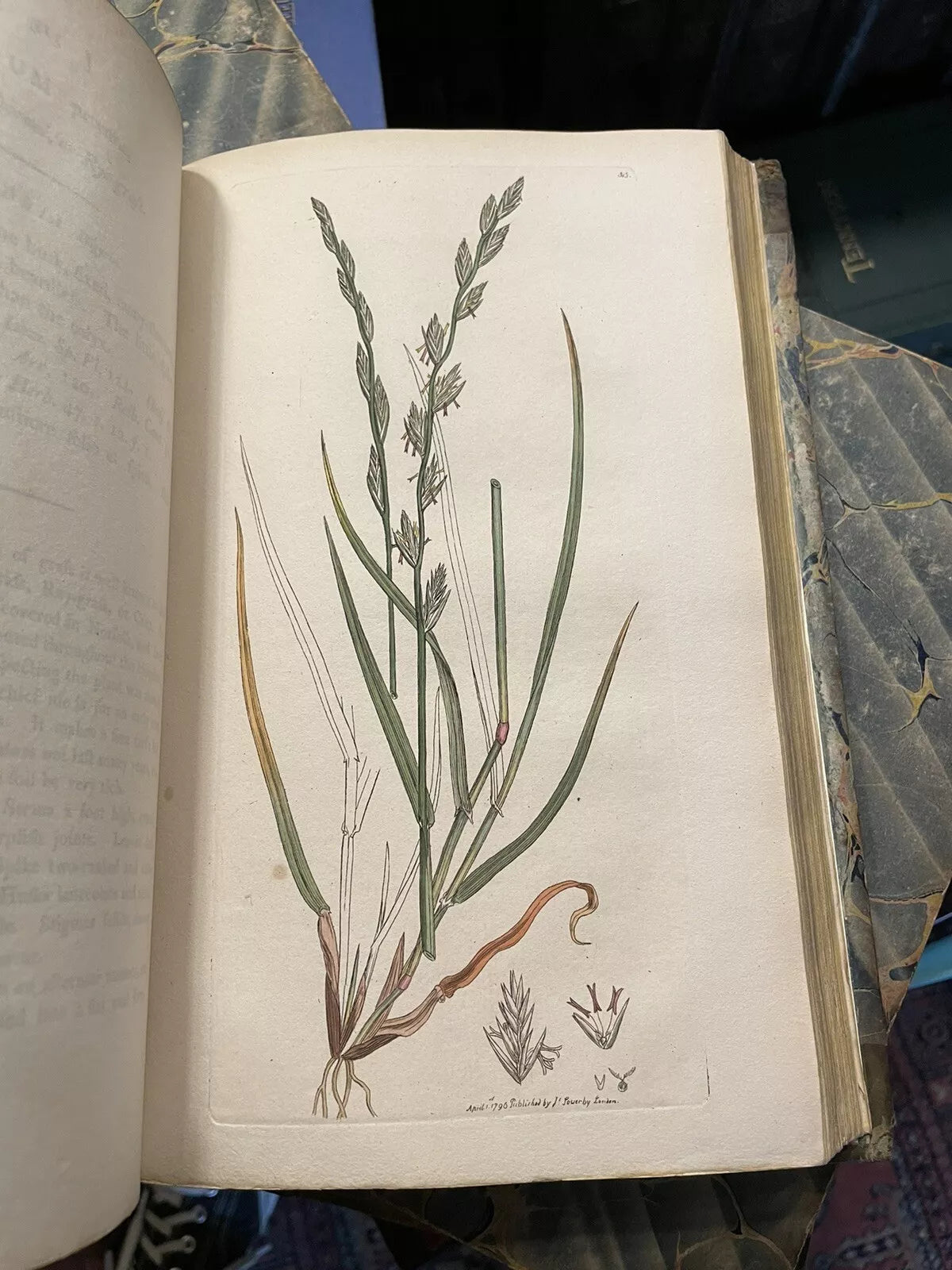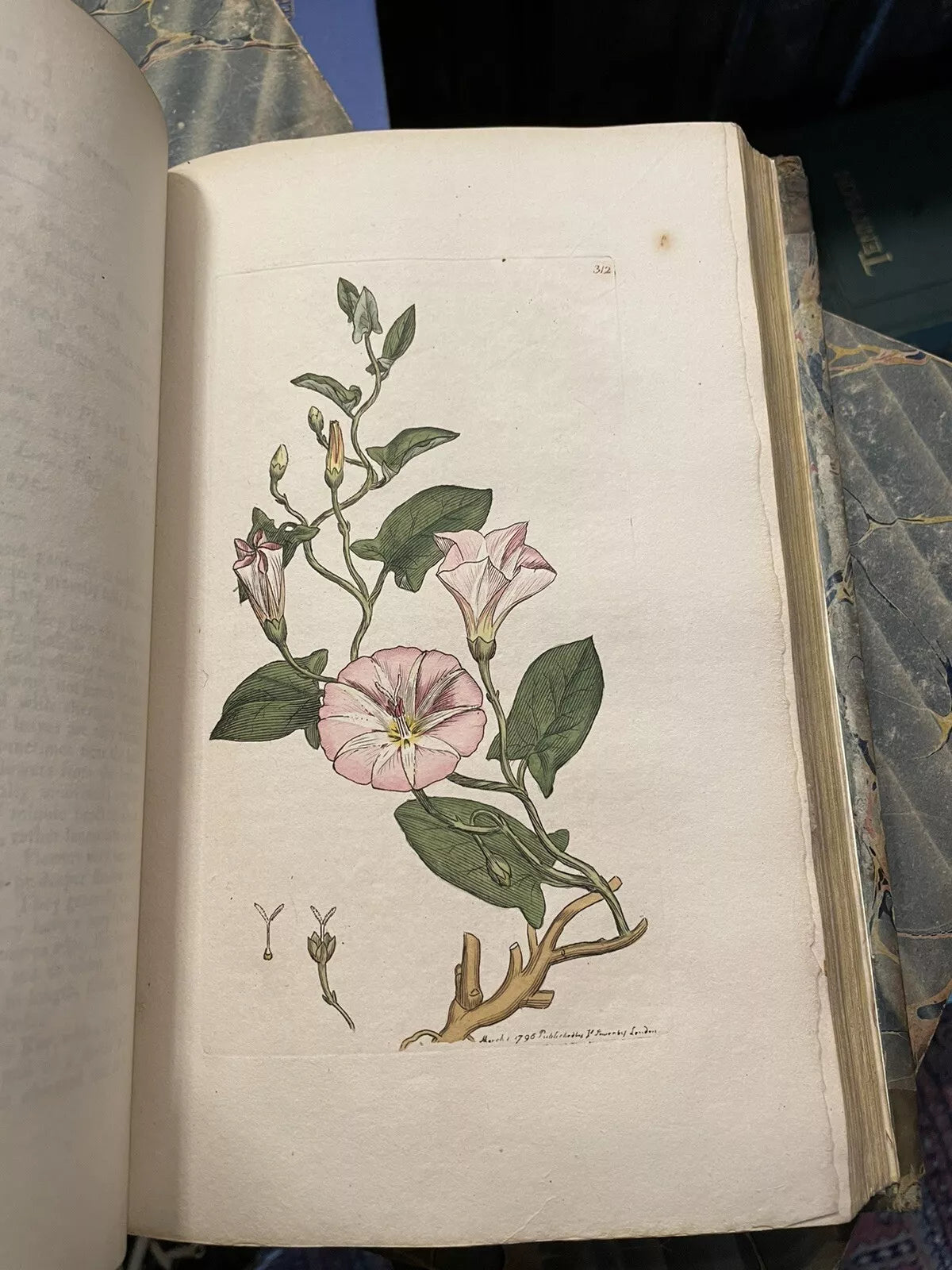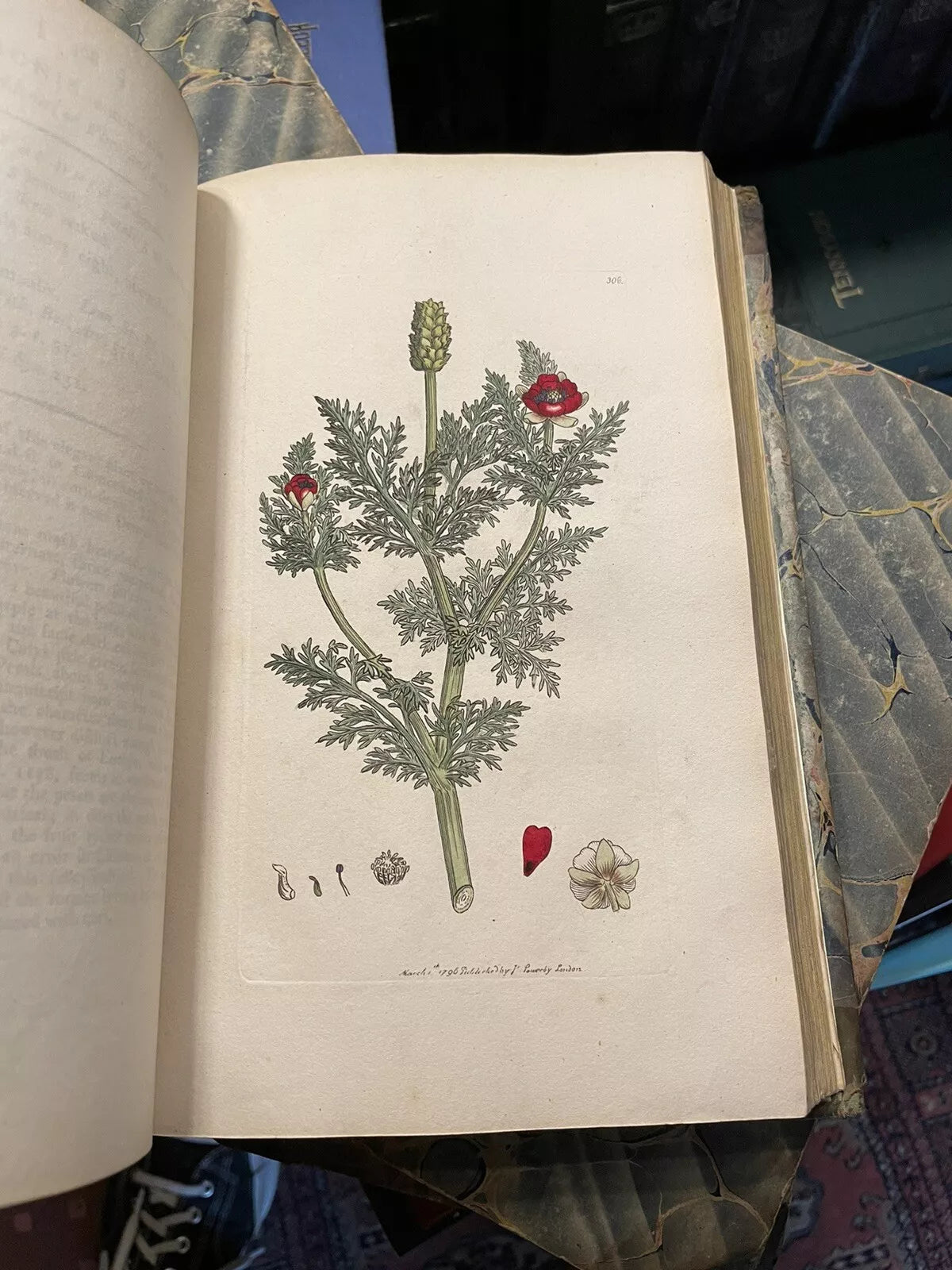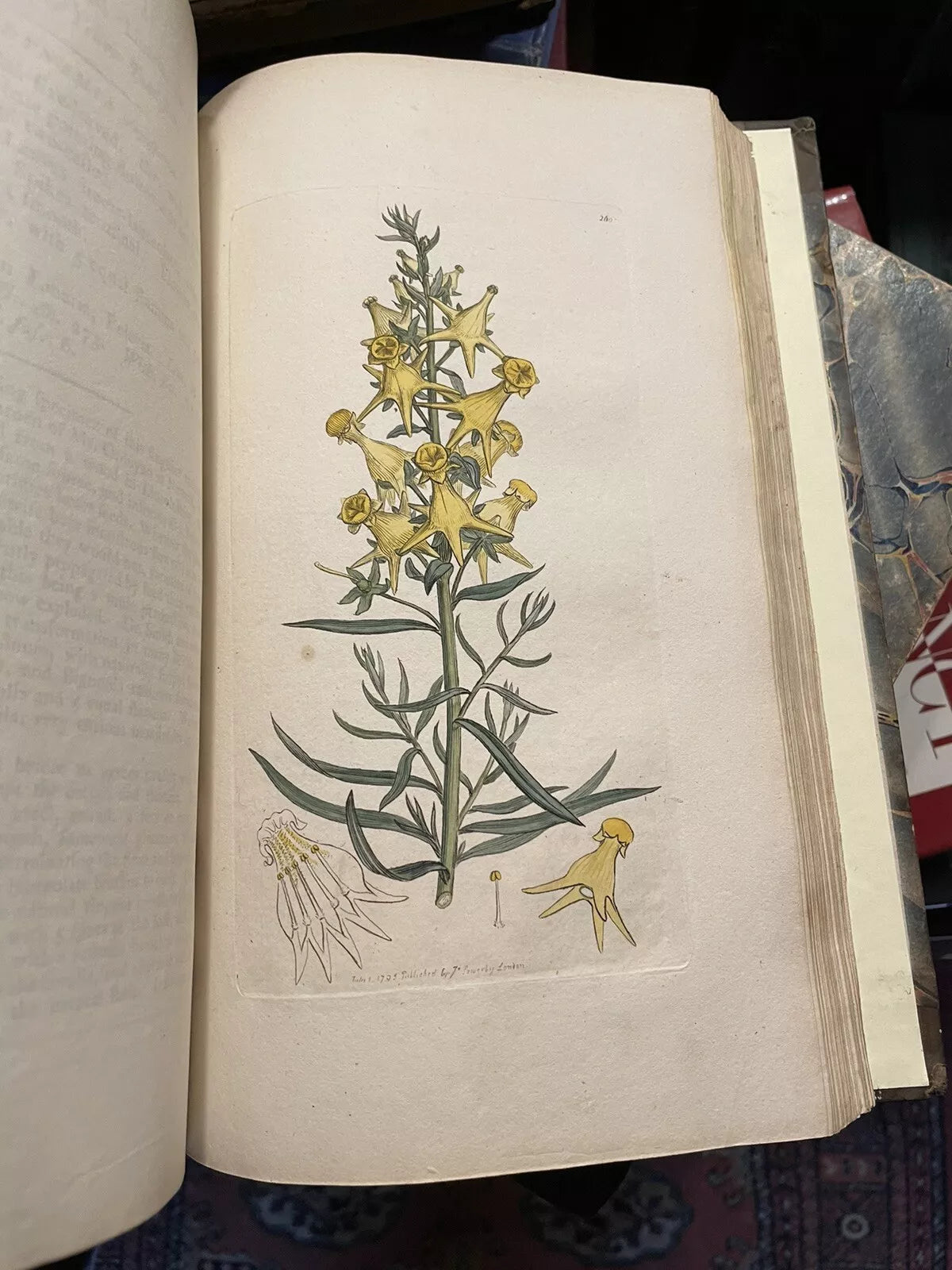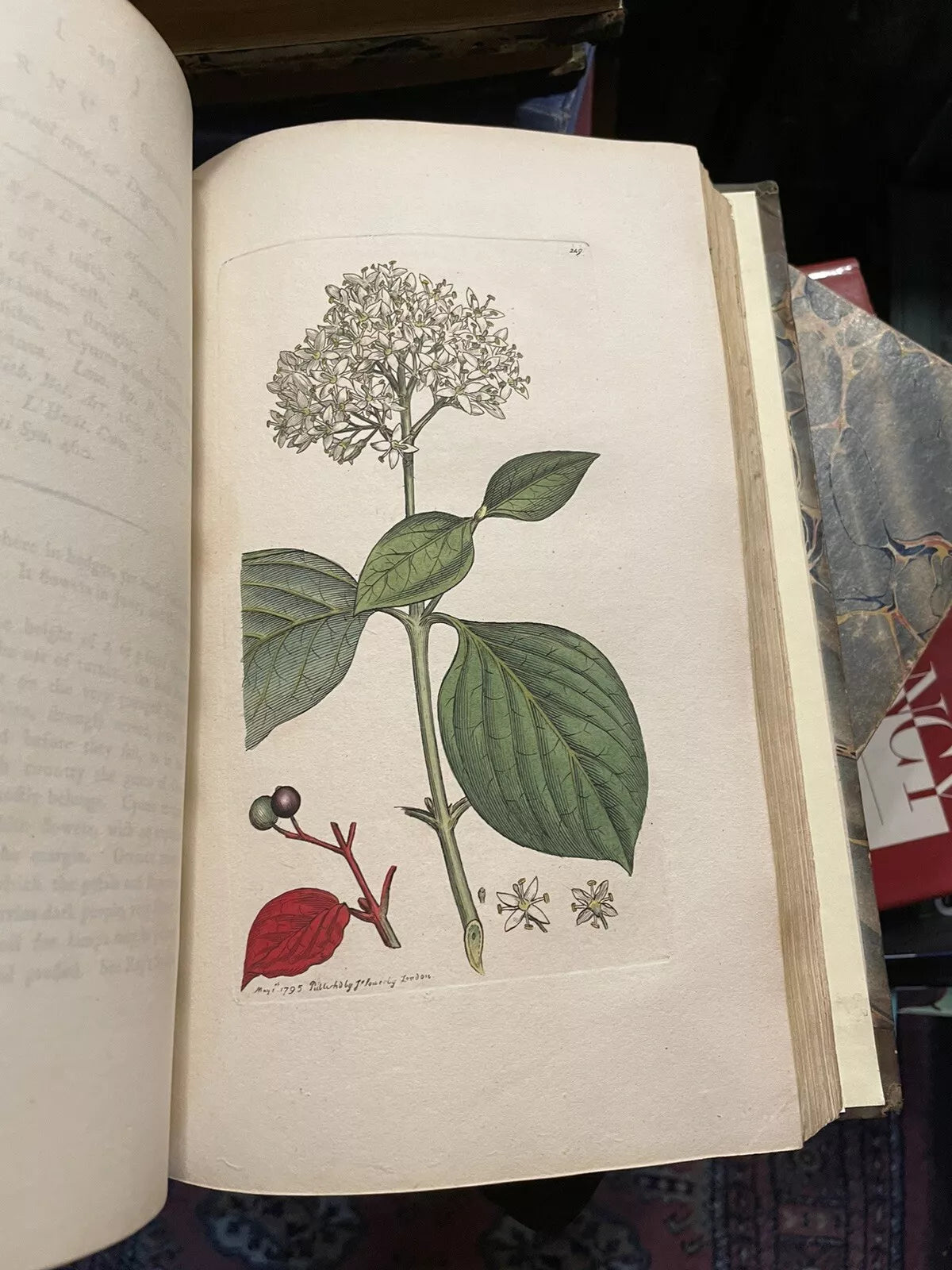The Gently Mad Book Shop
1790 James Sowerby : English Botany (5 Vols) 360 Hand-Coloured Plates : Flowers
1790 James Sowerby : English Botany (5 Vols) 360 Hand-Coloured Plates : Flowers
Couldn't load pickup availability
English Botany
Or, Coloured Figures of British Plants, with their Essential Characters, Synonyms, and Places of Growth. To which will be added, Occasional Remarks. [Known also as 'Sowerby's Botany'.]
By James Sowerby
Printed for the Author, by J. Davis. 1790-1796. Five Volumes. 8vo, Half leather bindings, marble boards. With 360 hand-coloured plates between the five volumes, each with descriptive text, the tissue guards that protect each plate are all present throughout all 5 volumes.
Vol I: Published 1790 and with hand-coloured plates 1-72
Vol 2: Published 1790 and with hand-coloured plates 73-144
Vol 3: Published 1790 and with hand-coloured plates 145-216
Vol 4: Published 1790 and with hand-coloured plates 217-288
Vol 5: Published 1790 and with hand-coloured plates 289-360
CONDITION
All five volumes in very good condition. The bindings have had new leather spines and labels added at some point in the past and with new plain endpapers. All 5 text blocks are in very good, clean condition throughout and free from foxing stains, annotations, names, thumb marks, etc. All of the 360 hand-coloured plates are present and in very fine condition. All tissue guards present and therefore there is no offsetting throughout the books. Overall these five volumes are in fine condition.
James Sowerby (21 March 1757 – 25 October 1822) was an English naturalist, illustrator and mineralogist. Contributions to published works, such as A Specimen of the Botany of New Holland or English Botany, include his detailed and appealing plates. The use of vivid colour and accessible texts was intended to reach a widening audience in works of natural history.
In 1790, he began the first of several huge projects: a 36-volume work, English Botany that was published over the next 23 years, contained 2,592 hand-coloured engravings and became known as Sowerby's Botany. An enormous number of plants were to receive their first formal publication within this work, but the authority for these came from the initially unattributed text written by James Edward Smith. The work was continued by his son, James de Carle Sowerby who published a further set of 204 plates, mostly uncoloured until the end of the first edition in 1835. Further plates were added by other hands up to 1865 ending with plate number 2,999.
It was the inclusion of science in the form of natural history, such as the thousands of botanicals supplied by Smith or his own research, that distinguished Sowerby's art from early forms of still life. This careful description of the subjects, drawing from specimens and research, was in contrast to the flower painting of the Rococo period found illuminating the books and galleries of a select audience. Sowerby intended to reach an audience whose curiosity for gardening and the natural world could be piqued by publishing the attractive and more affordable works. The appealing hand-coloured engravings also became highly valued by researchers into the new fields of science
(Natural History, Top)
Share with someone
